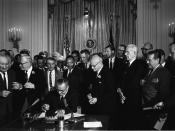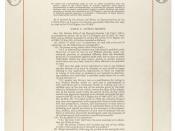Gender differences are another major diversity issue within organizations. Women have come a long way from the days of being considered worthy only of the title "home-maker." While facets such as career progression and pay are closer to equal in today's business world, it would be foolish of any organization to think that men and women are the same. Each gender has different methods and styles of achieving goals within the organization however; these many differences between them tend to leave room for conflict.
Men tend to define themselves in terms of their work place performance, therefore when a man experiences actual or perceived exclusion at work it affects his self-esteem more than it would a woman. Men also tend to socially loaf (put forth less effort) when working in groups regardless of whether or not they have been previously excluded or included in the work placeWomen, on the other hand have larger social networks and rely on them as a means to cope with workplaces stressors.
Women are joining the workforce with the demand of being treated equally. What is called for, and all-too-often lost in the debate is an approach that allows men and women to maximize their respective strengths in the workplace, and to recognize that the true competitive advantage lies in an ability to allow those strengths to coexist in a co-operative, supportive and aware workplace (Annis, n.d.).
Women have gone through many struggles over the centuries. They were viewed as second-class citizens, spat on, and seen as sex objects. One could argue that women have had many more struggles to face than men. However, today women are taking control and moving up the ladder. They are tired of being an oppressed group. This breakout has resulted in many opportunities for women both as individuals and...


